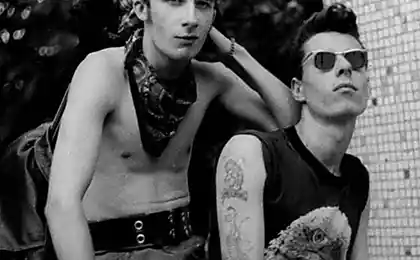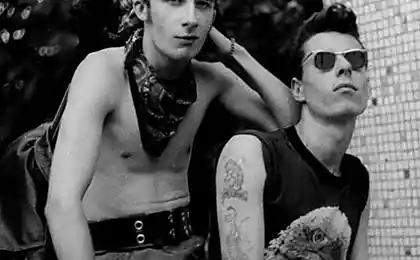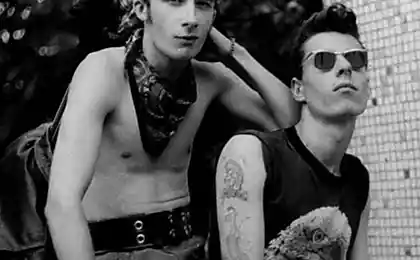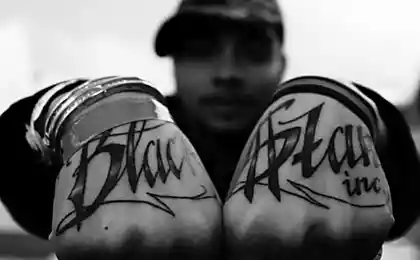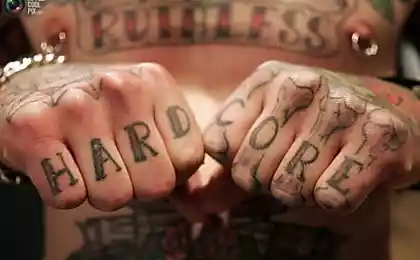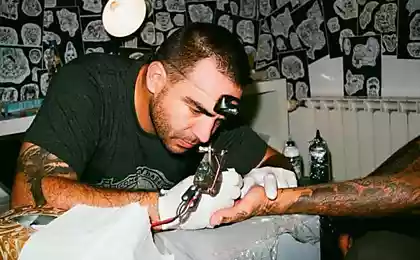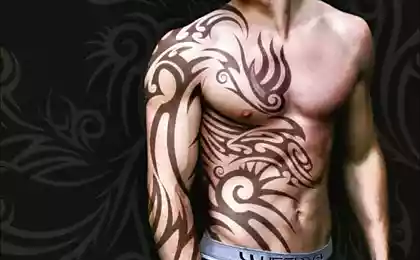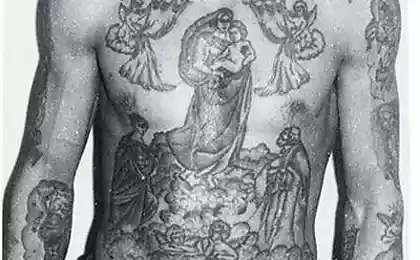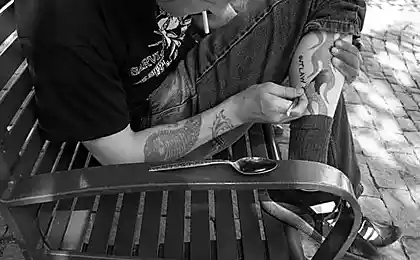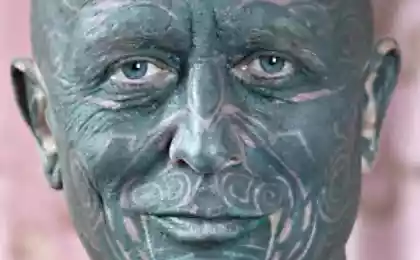2521
Facts about tattoos
Fifty years ago, tattoos were signs the rebels and social outcasts - bikers, sailors, carnival freaks. But today, the average woman probably has a unicorn butterfly on the ankle or the lower back. Tattoos have been a part of the human experience since the Stone Age, and was attended by almost every culture around the world, from the ancient Greeks and Romans to the Africans, Native Americans and Polynesians. Here are 10 facts about tattoos: the stigma of tramps and back to the mummies.
1. The legality
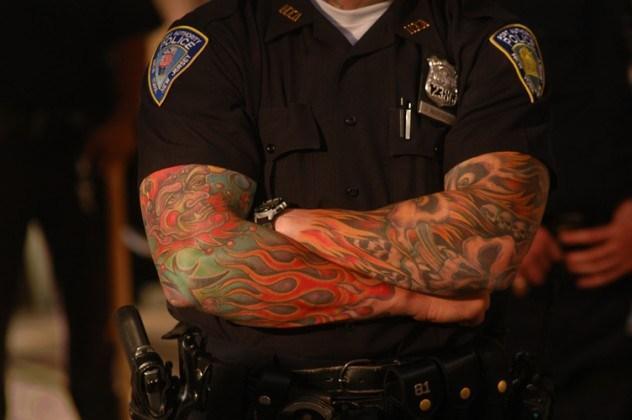
Today, the streets of cities such as Boston and New York, teeming with tattoo parlor, but few realize that this is a recent change. Many states have adopted extreme measures to prohibit tattoos in 1960, when an outbreak of hepatitis has reached a critical point. In New York, it was illegal to tattoo between 1961 and 1997, so the artists were forced to move to the cellars. In Massachusetts, tattoos were illegal until 2000 and meant severe penalties, including possible imprisonment. Today, all states allow tattoos, although the rules for minors vary from state to state: some allow children to do the tattoo after parental permission, others are forced to wait up to 18 years, with no exceptions.
2. Hallmarks prostitutes and pregnancy
Even if we ignore the social connotations of so-called "marks prostitutes" remains, at least one of the possible unforeseen troubles for women who want to get a tattoo on the lower back. Some anesthesiologists have expressed concern that epidural anesthesia for pregnant women with tattoos can lead to potential complications in the form of fragments of ink hit in the spinal cord. The risk is very slight, especially for the tattoos, which were made more than a few months ago, but the probability is. Of even greater concern is the message that the iron oxide in the tattooing ink sometimes reacts during MRI and may cause burns.
3. Henna tattoos

For those who have not plucked up the courage to commit to a permanent tattoo, there are alternatives. Young children love temporary tattoos, which are made in vending machines in supermarkets, at carnivals, sidewalks, etc., you probably often seen booths where do henna tattoos. Extracted from plant dye henna has been used for thousands of years for painting hair and uncomplicated designs on the skin. Natural henna first gives a light orange color and darkens to the color of red rust in a few days. When the skin is peeling, gently figure disappears. However, commonly used "henna black" contains synthetic ingredients, especially p-phenylenediamine (PPD). PPD is produced from coal tar and is known to cause a terrible reaction and scarring. Worse, some black henna contains a carcinogenic substance that can cause life-threatening diseases such as leukemia.
4. Macy
Macy Department Store was founded in New York in 1858 and quickly turned into an empire. He made a long journey to the American public consciousness with the help of the annual Thanksgiving Day parade and spectacular fireworks July 4th. Logo store simple and classic: a red star. Few people know that in fact comes from the star tattoos, which the founder of AD Macy worn on the forearm. In his youth, he found a job at Macy's whaling fishing vessel, where he acquired a tattoo along with other sailors. Although in order to popularize AD Macy was shown in 1947 as a Christmas miracle on 34th Street, tattooed owner of a chain of department stores actually died 70 years ago.
5. Urban Legends

Any part of the culture, particularly since the widespread and controversial as tattoos, of course, gives rise to its own collection of rumors, tall tales and urban legends. Some of them are so absurd that almost believable, like a fable, that the children's entertainer Mr. Rogers was killed by a sniper Navy, who wore sweaters to hide his heavily tattooed forearm (he was actually one of the nicest people and sweaters They were tied by his mother). Other stories even worse: the stories about the crazy parents, to tattoo the baby, and vengeful guys tattooing the image on the back of a pile of excrement deceived their girlfriends. Like most urban legends, they moved into the category of fiction.
6. Sponsorship tattoos
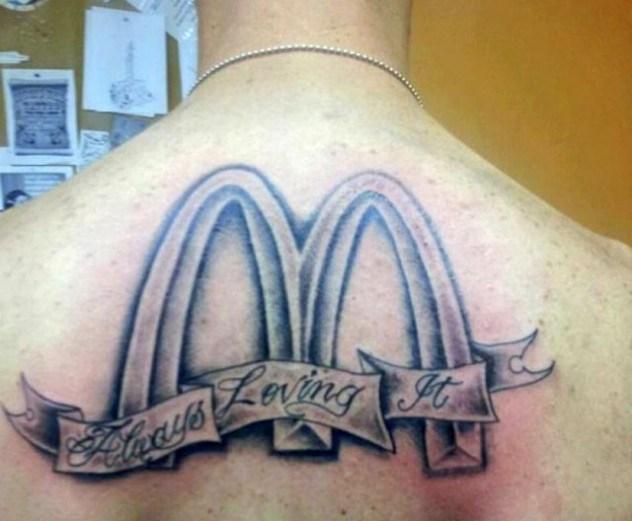
Some people are willing to almost anything for money, and advertisers are desperate to reach the audience, so little wonder that the emergence of sponsorship tattoos so long. In 2013, the company Rapid Realty, engaged in real estate in New York, made an offer to its employees, many of whom could not refuse: to tattoo the company logo on the body and get a wage increase of 15%. Dozens of people have accepted this offer. Amateur boxers from Alaska, Billy Gibby, known as "Billy man-billboard" to pay their bills via the sponsorship of tattoos, which number more than two dozen, including the face. His work includes logos Free Tax Service, Host Gator and a few porn sites.
Some sponsored tattoos were actually made out of the spirit of altruism. In 2012, the British named Dave Ryder made several tattoos on his body logos to raise money for the son of a friend. The boy who suffered from meningitis, have amputated legs and fingers in under two years.
7. Vegetarian black ink

Life staunch vegans can be quite difficult. Outside the large cosmopolitan cities of the menu options are very limited. Some of them, called "ethical vegans" go further, not only to remove from your diet products of animal origin, but rejecting any products or lifestyles that are associated with the exploitation of animals. This includes, for example, wearing of the skin or the use of shampoo and cosmetic products that have been tested in laboratory animals. This also means that they must be very, very careful in those places where they make tattoos. Although there are a vegan tattoo parlors, but very few of them and they are far apart. Unfortunately, most tattooing inks are made using bone ash (burned animal bones), and sometimes resin Shellac beetles. Even if they are provided with vegan-friendly ink, the soaps and ointments used for the purification and treatment of finished tattoos often contain animal by-products.
8. prison and gang tattoos

While many people make tattoos based entirely on a drunken whim, others terribly serious about this, their body art is full of meaning and symbolism. This is particularly true for members of bands, including a lattice. One group of particularly well-known for its tattoos, a Japanese Yakuza, an organized crime group that has existed for hundreds of years. Yakuza is known for its huge, occupying the entire body with tattoos, called «irezumi». Unlike Western tattoos that are usually made electric gun tattoo yakuza applied a needle in a traditional style, being expensive, painful and time-consuming process.
In American prisons, tattooing is strictly forbidden, but was a common practice for many years. The equipment is made from everything from ballpoint pens to guitar strings and staples. Prison tattoos are extremely complex symbolism of various design that reflects gang affiliation to the prisoner or significant life events. The number "13" refers to the Mara Salvatrucha membership of 13, the brutal gang composed primarily of immigrants from Central America and known traffickers. The members of the Aryan Brotherhood are often applied shamrocks or web.
9. Cosmetic tattoos

Not all tattoos are designed to attract attention, some are designed to subtly emphasize the beauty. There has been a huge surge in cosmetic tattoos or permanent makeup. Such procedures include painting eyebrows, lip contour and the introduction of eyeliner. Of course, there are certain things that should be taken into account. You can save money on cosmetics, but your style is not changed. And, despite the fact that the tattoo is "permanent", they require streaking every few years to keep the tattoo in the best way. If you decide, ultimately, to return all back, removal can be extremely delicate work. After removal of the Tiger of the biceps - this one, and the removal of ink from the century - completely different.
Some cultures practiced tattooing on the face for generations. Malian women are tattooed gums to show their age and marital status.
10. Mummy

In 1991, the body was found frozen in a glacier in the Ötztal Alps, on the border of Italy and Austria. Although initially it was thought that the body is unfortunate climber body actually turned out to be ancient and dates from around 3255 BC The mummy of Oetzi was named after its place of discovery. Oetzi died about 700 years before construction of the Great Pyramid at Giza. Analysis gave the body a wide range of information from its last meal and ending with his pedigree and the cause of his death - he was a victim of violence in his shoulder found an arrowhead, and the upper body and head covered with bruises. But the most intriguing part of the heritage of Oetzi may well be a series of tattoos, which he wore on his body. Dozens of characters and lines are left around the areas of the body, usually associated with acupressure, for example, the joints and the spine, leading researchers to believe that they were not part of the ornament, and a primitive form of medicine.
1. The legality

Today, the streets of cities such as Boston and New York, teeming with tattoo parlor, but few realize that this is a recent change. Many states have adopted extreme measures to prohibit tattoos in 1960, when an outbreak of hepatitis has reached a critical point. In New York, it was illegal to tattoo between 1961 and 1997, so the artists were forced to move to the cellars. In Massachusetts, tattoos were illegal until 2000 and meant severe penalties, including possible imprisonment. Today, all states allow tattoos, although the rules for minors vary from state to state: some allow children to do the tattoo after parental permission, others are forced to wait up to 18 years, with no exceptions.
2. Hallmarks prostitutes and pregnancy
Even if we ignore the social connotations of so-called "marks prostitutes" remains, at least one of the possible unforeseen troubles for women who want to get a tattoo on the lower back. Some anesthesiologists have expressed concern that epidural anesthesia for pregnant women with tattoos can lead to potential complications in the form of fragments of ink hit in the spinal cord. The risk is very slight, especially for the tattoos, which were made more than a few months ago, but the probability is. Of even greater concern is the message that the iron oxide in the tattooing ink sometimes reacts during MRI and may cause burns.
3. Henna tattoos

For those who have not plucked up the courage to commit to a permanent tattoo, there are alternatives. Young children love temporary tattoos, which are made in vending machines in supermarkets, at carnivals, sidewalks, etc., you probably often seen booths where do henna tattoos. Extracted from plant dye henna has been used for thousands of years for painting hair and uncomplicated designs on the skin. Natural henna first gives a light orange color and darkens to the color of red rust in a few days. When the skin is peeling, gently figure disappears. However, commonly used "henna black" contains synthetic ingredients, especially p-phenylenediamine (PPD). PPD is produced from coal tar and is known to cause a terrible reaction and scarring. Worse, some black henna contains a carcinogenic substance that can cause life-threatening diseases such as leukemia.
4. Macy
Macy Department Store was founded in New York in 1858 and quickly turned into an empire. He made a long journey to the American public consciousness with the help of the annual Thanksgiving Day parade and spectacular fireworks July 4th. Logo store simple and classic: a red star. Few people know that in fact comes from the star tattoos, which the founder of AD Macy worn on the forearm. In his youth, he found a job at Macy's whaling fishing vessel, where he acquired a tattoo along with other sailors. Although in order to popularize AD Macy was shown in 1947 as a Christmas miracle on 34th Street, tattooed owner of a chain of department stores actually died 70 years ago.
5. Urban Legends

Any part of the culture, particularly since the widespread and controversial as tattoos, of course, gives rise to its own collection of rumors, tall tales and urban legends. Some of them are so absurd that almost believable, like a fable, that the children's entertainer Mr. Rogers was killed by a sniper Navy, who wore sweaters to hide his heavily tattooed forearm (he was actually one of the nicest people and sweaters They were tied by his mother). Other stories even worse: the stories about the crazy parents, to tattoo the baby, and vengeful guys tattooing the image on the back of a pile of excrement deceived their girlfriends. Like most urban legends, they moved into the category of fiction.
6. Sponsorship tattoos

Some people are willing to almost anything for money, and advertisers are desperate to reach the audience, so little wonder that the emergence of sponsorship tattoos so long. In 2013, the company Rapid Realty, engaged in real estate in New York, made an offer to its employees, many of whom could not refuse: to tattoo the company logo on the body and get a wage increase of 15%. Dozens of people have accepted this offer. Amateur boxers from Alaska, Billy Gibby, known as "Billy man-billboard" to pay their bills via the sponsorship of tattoos, which number more than two dozen, including the face. His work includes logos Free Tax Service, Host Gator and a few porn sites.
Some sponsored tattoos were actually made out of the spirit of altruism. In 2012, the British named Dave Ryder made several tattoos on his body logos to raise money for the son of a friend. The boy who suffered from meningitis, have amputated legs and fingers in under two years.
7. Vegetarian black ink

Life staunch vegans can be quite difficult. Outside the large cosmopolitan cities of the menu options are very limited. Some of them, called "ethical vegans" go further, not only to remove from your diet products of animal origin, but rejecting any products or lifestyles that are associated with the exploitation of animals. This includes, for example, wearing of the skin or the use of shampoo and cosmetic products that have been tested in laboratory animals. This also means that they must be very, very careful in those places where they make tattoos. Although there are a vegan tattoo parlors, but very few of them and they are far apart. Unfortunately, most tattooing inks are made using bone ash (burned animal bones), and sometimes resin Shellac beetles. Even if they are provided with vegan-friendly ink, the soaps and ointments used for the purification and treatment of finished tattoos often contain animal by-products.
8. prison and gang tattoos

While many people make tattoos based entirely on a drunken whim, others terribly serious about this, their body art is full of meaning and symbolism. This is particularly true for members of bands, including a lattice. One group of particularly well-known for its tattoos, a Japanese Yakuza, an organized crime group that has existed for hundreds of years. Yakuza is known for its huge, occupying the entire body with tattoos, called «irezumi». Unlike Western tattoos that are usually made electric gun tattoo yakuza applied a needle in a traditional style, being expensive, painful and time-consuming process.
In American prisons, tattooing is strictly forbidden, but was a common practice for many years. The equipment is made from everything from ballpoint pens to guitar strings and staples. Prison tattoos are extremely complex symbolism of various design that reflects gang affiliation to the prisoner or significant life events. The number "13" refers to the Mara Salvatrucha membership of 13, the brutal gang composed primarily of immigrants from Central America and known traffickers. The members of the Aryan Brotherhood are often applied shamrocks or web.
9. Cosmetic tattoos

Not all tattoos are designed to attract attention, some are designed to subtly emphasize the beauty. There has been a huge surge in cosmetic tattoos or permanent makeup. Such procedures include painting eyebrows, lip contour and the introduction of eyeliner. Of course, there are certain things that should be taken into account. You can save money on cosmetics, but your style is not changed. And, despite the fact that the tattoo is "permanent", they require streaking every few years to keep the tattoo in the best way. If you decide, ultimately, to return all back, removal can be extremely delicate work. After removal of the Tiger of the biceps - this one, and the removal of ink from the century - completely different.
Some cultures practiced tattooing on the face for generations. Malian women are tattooed gums to show their age and marital status.
10. Mummy

In 1991, the body was found frozen in a glacier in the Ötztal Alps, on the border of Italy and Austria. Although initially it was thought that the body is unfortunate climber body actually turned out to be ancient and dates from around 3255 BC The mummy of Oetzi was named after its place of discovery. Oetzi died about 700 years before construction of the Great Pyramid at Giza. Analysis gave the body a wide range of information from its last meal and ending with his pedigree and the cause of his death - he was a victim of violence in his shoulder found an arrowhead, and the upper body and head covered with bruises. But the most intriguing part of the heritage of Oetzi may well be a series of tattoos, which he wore on his body. Dozens of characters and lines are left around the areas of the body, usually associated with acupressure, for example, the joints and the spine, leading researchers to believe that they were not part of the ornament, and a primitive form of medicine.
